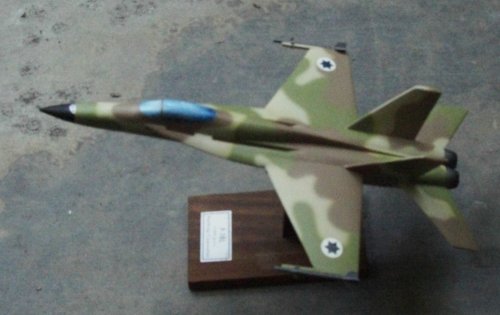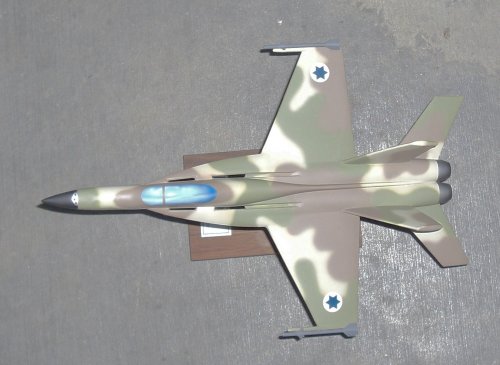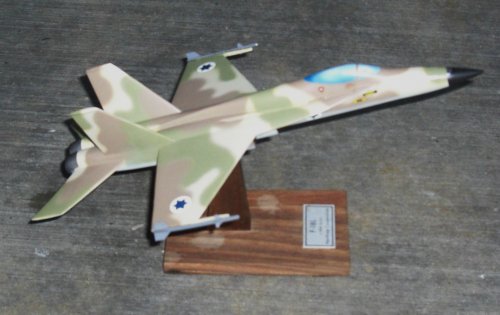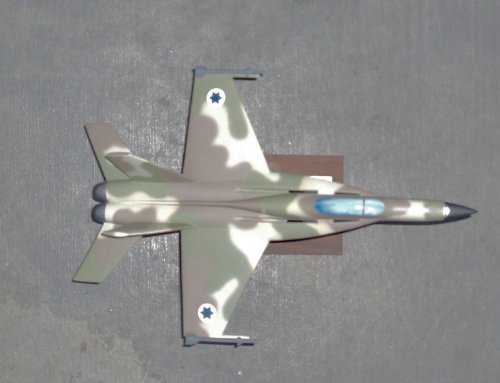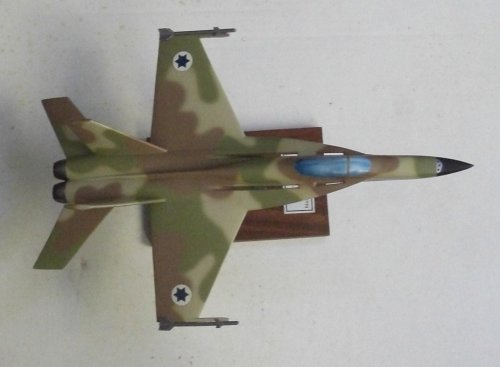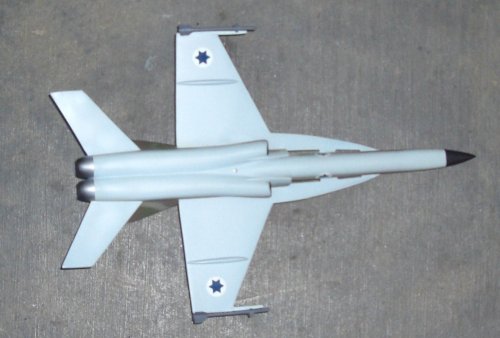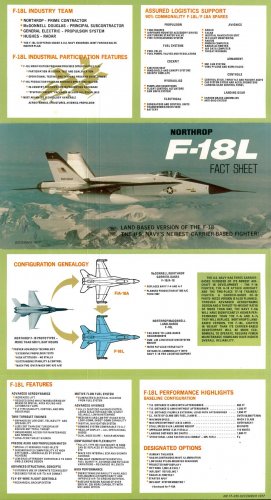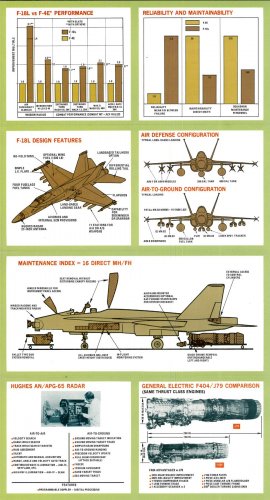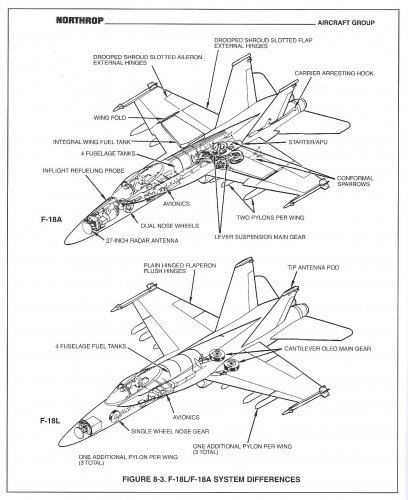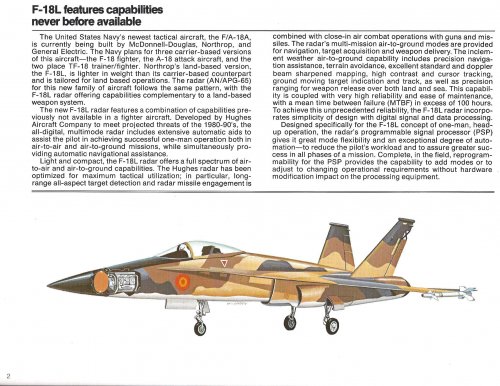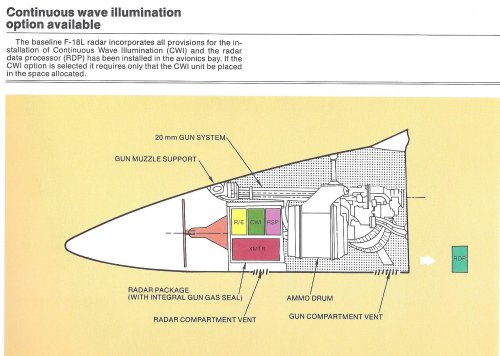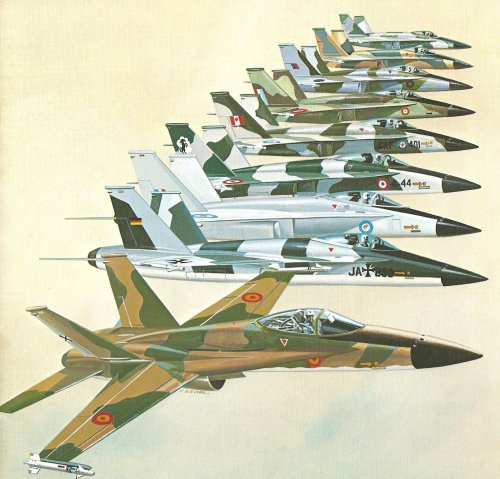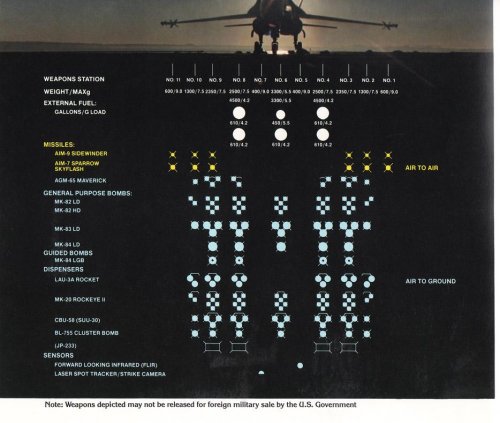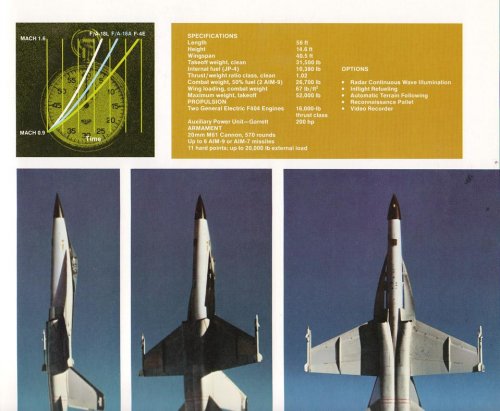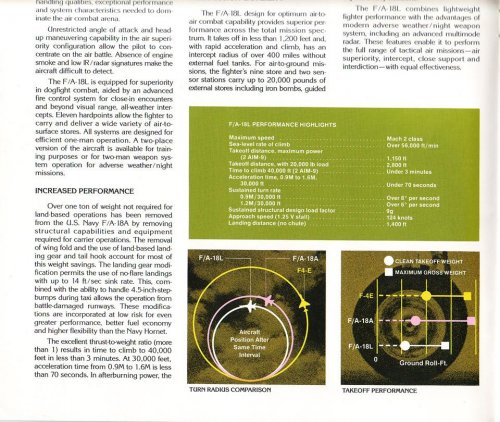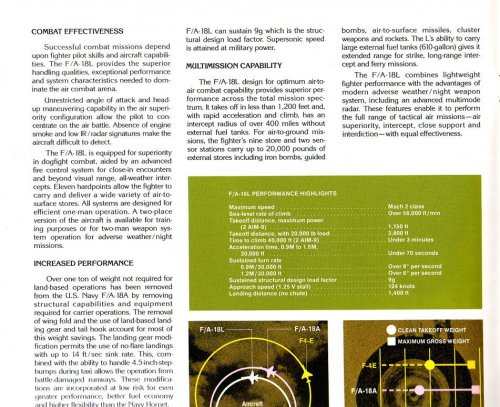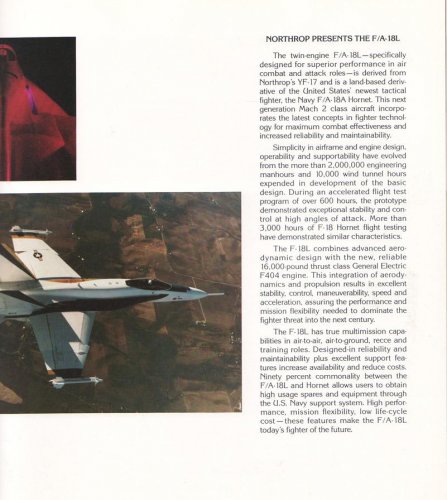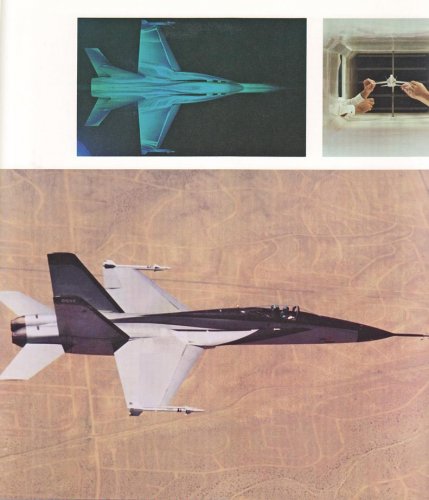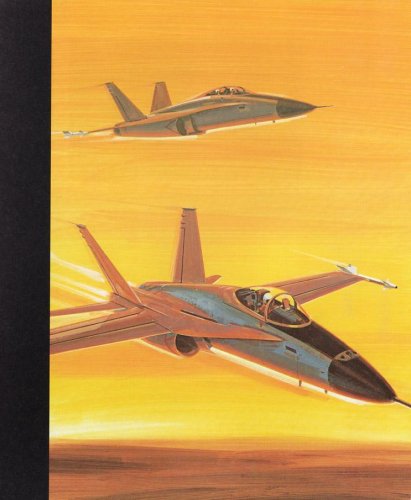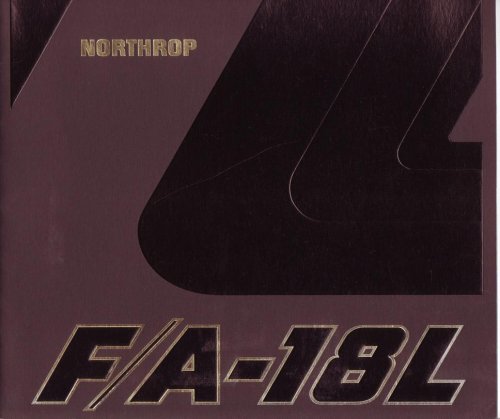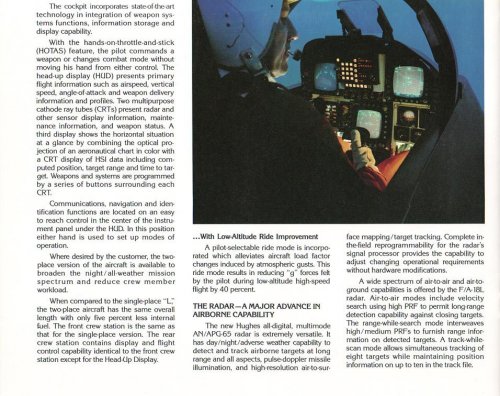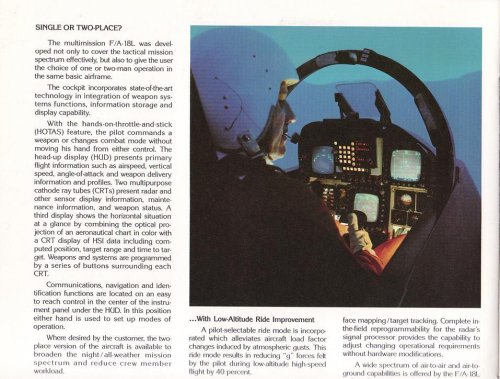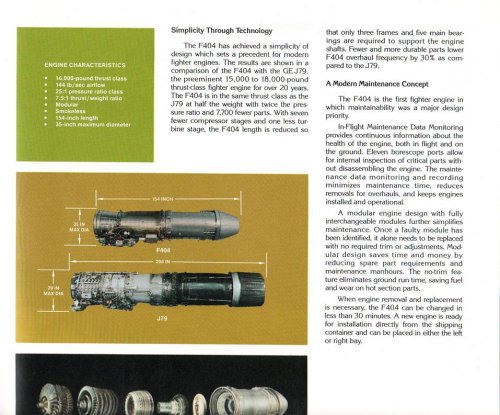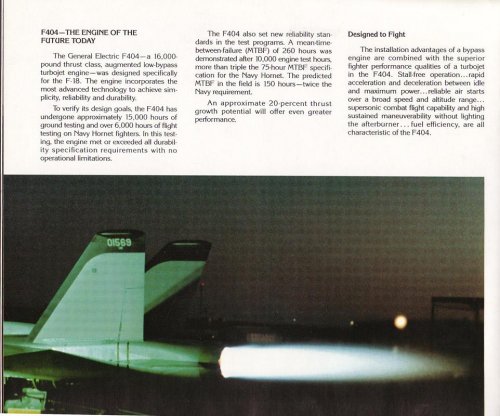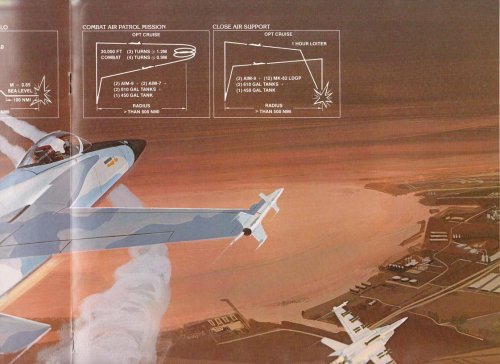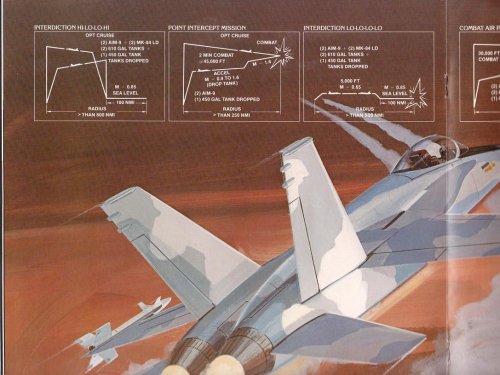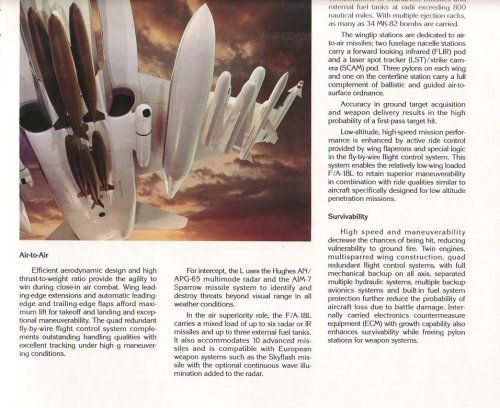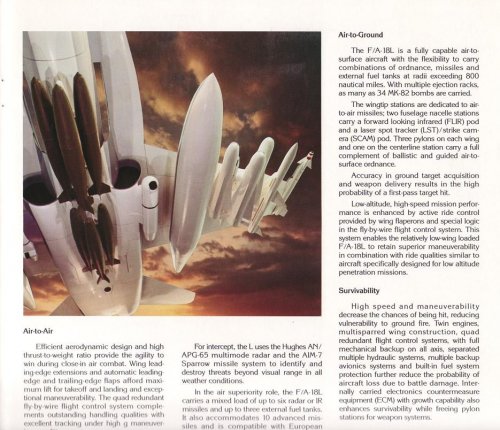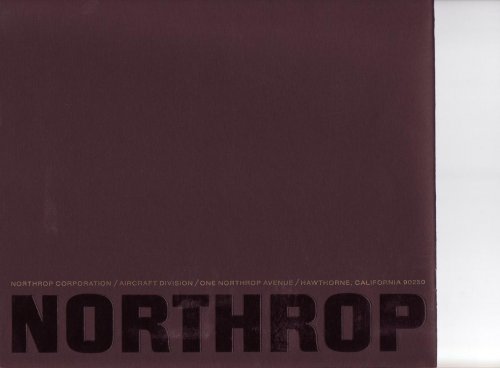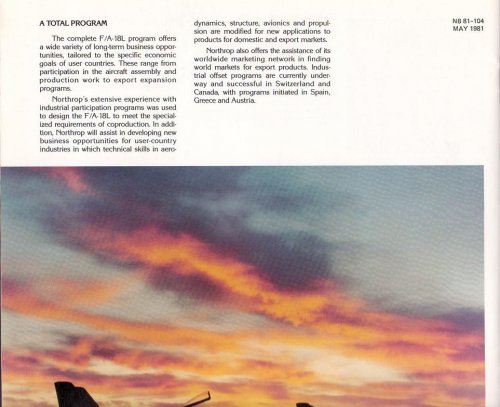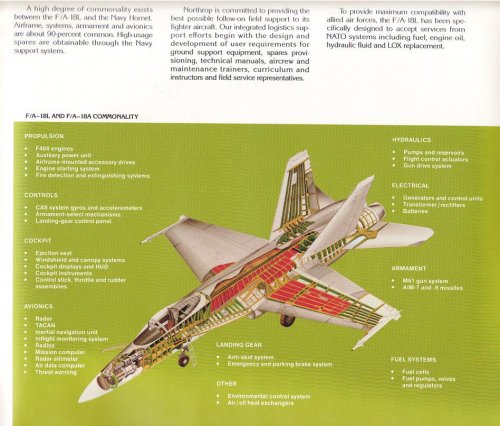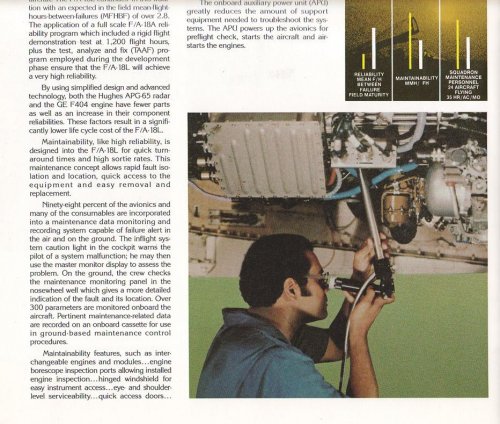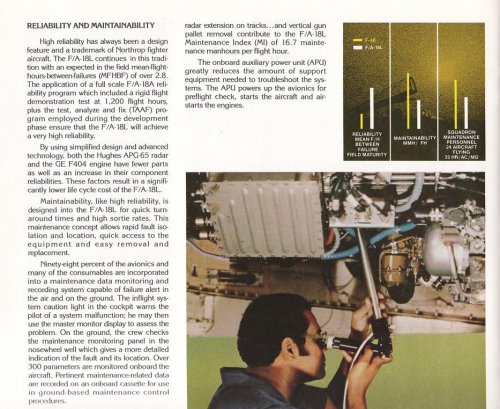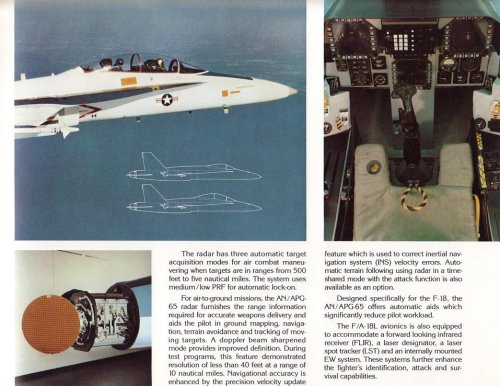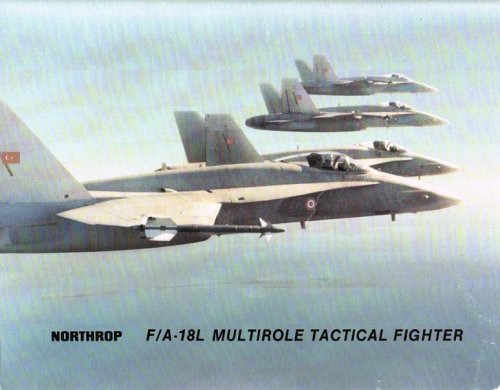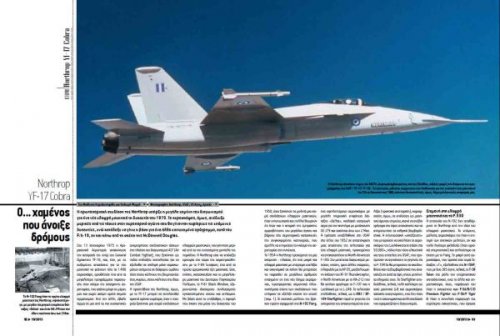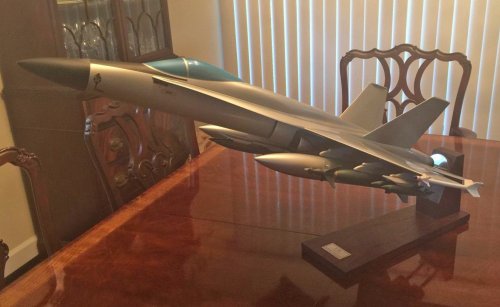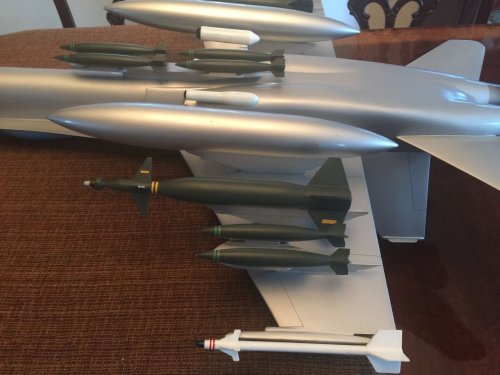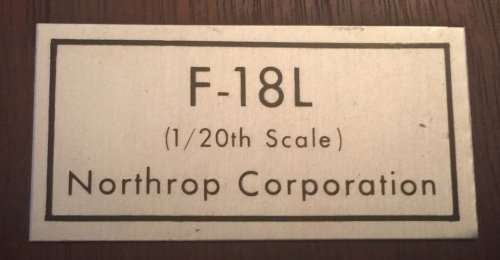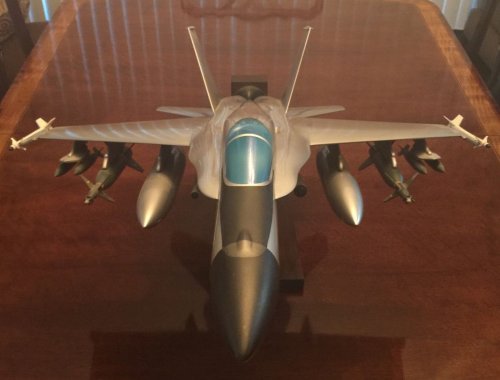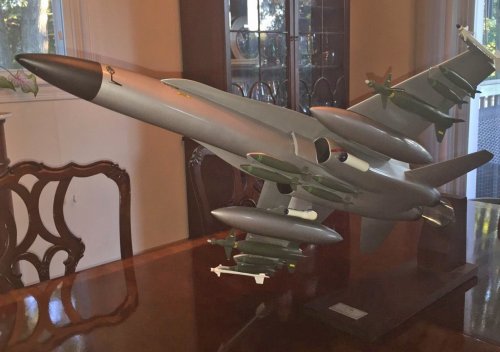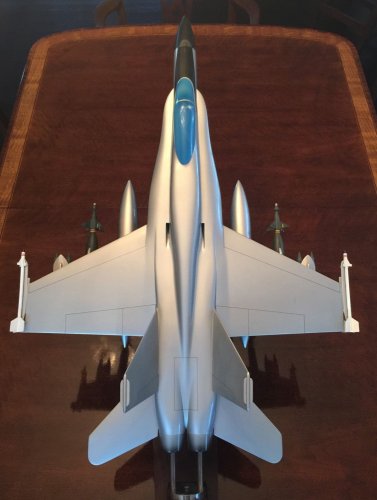SL,
Maximum internal fuel weight, with a dry wing was about that. Though if you check the specs out, up the page, you will see standard F/A-18 10,800lbs. This is the big problem for me. You pull the fuel or you don't have a 1.2:1 T/Wr which is necessary, not just to trounce the period F-16 (1.15 headed for 1.09 with the centerline) in sustained turn rate but also to get a Mach sprint which will take the aircraft to 1.2 in under 40 seconds needed for best AIM-7 pole performance.
This in turn is critical (as the illustration of 500lb class Sparrows on the wingtips) because the F-16 did not have -any- BVR capability at the time and would not until 1986 or so and the Egyptian F-16CG purchase. Despite mounting AIM-7s underwing and on the MLG doors, the F-16 was simply too small to be a capable BVR platform, both for radar and for sustained EM capabilities with assymetric loads.
You go down to 7,700lbs on the F-18L and you can get this kind of performance, clean. However you now have F-16 (7,200lbs) internal fuel problems for which carrying F-15 class EFT (4,000lb vs. 2,150 for the 330s on the naval Hornet) is your sole rescue from fuel starvation. You're not going to be taking those tanks above the Mach and the F-18L is too short stanced to clear a 600 gallon tank under the belly which means you are still talking 7+8 = 15,000lbs of fuel which is _exactly_ the same 10,800 + 4,300 class as the original F/A-18 with much more parasitics/tunnel drag from the large external loads depicted.
When it comes to understanding the tactical, doctrinal, dynamic; a lot of people mistake the notion of radius for speed. In OEF, the USN were flying up to 1,200nm radius but they were doing it at .76 or lower, hanging on their wings. In SEA, this figure was often less than 120nm, simply because the VPAF did not want to tackle a full up CVBG in the gulf of Tonkin. The landbased fighter often has more realistic <500nm radii (the USAF came a lot further out of Thailand and went a lot deeper into RPV/VI) and compensates by staging tanker orbits halfway inbetween.
What this buys them is a MUCH longer period of 500-550 knot ingress with minimum burner and very fast target egress in particular, before outside threats can arrive from more directions than a conventional BARCAP or SEAD effort can manage.
This is where a straight winged fighter is going to suffer, you are talking about a .85+ Mach capability with a large fuel and ordnance load and without a lot of the nice to haves like internal jammers that give back a pylon to Squiddy jets.
If there is a critical flaw in the F-18Ls design, from a USAF perspective, it is this critical ability to sustain the high subsonic Mach point for the last 50-100nm into the target area, tap the burner to sprint into the QRAs cutoff vector, exiting the baselane, and stuff them up with either a snapup to GIW kill from low level or a face pass/pump on sparrow shot.
Does this matter? Well, IMO, the F-16 is the biggest waste of cut metal 'inventory for inventories sake' since the F-104 /as NATO a swing fighter/ (does great in the CAVU Israeli's hands). Because it was all or nothing dedicated to the AIM-120 as a 350lb MRM capability which not only mean we were cheating ourselves of 200lbs of motor pour on jets like the F-14/15/18 which could take the weight without going assymetric but also because the lag from 1984 to 1986 to 1991 as we did the whole hybrids-become-MMIC trick mean that the jet was essentially unable to match the intercept geometry setting leverage of fast SARH platforms like the MiG-23 using stinger tactics with the APG-59 equivalent Sapfir. And was completely outclassed by the MiG-29 and Su-27 in a wall of bear condition.
You simply _cannot_ bring a heatshot fighter to cloudy-rainy-snowy Northern Europe and expect anything but embarrassment.
You cannot even properly do the MFFC off an Eagle to swing them in around the threat sensor cones because JTIDS, as usual, evolved from an advanced IFDL to an all-dancing, broad area, networking system which was both too heavy for the F-16 in the initial Type II terminal and too expensive overall to reach more than a few Tyndall Eagles.
The F-18L could have changed all this, had Congress properly stood up on it's hind legs and told the children of the USN: "NO! Pick one and share or put it back on the shelf!" while at the same time cancelling the F-14 after the Iranian debacle compromised Phoenix, completely. The USN could not afford to lose all Sparrow capability as an OAB FADF, even if they hadn't had enough of the A-7/F-8 narrow track gear nonsense.
That means the USAF _will_ pickup the YF-17 as their LWF low end and now you have 120 Eagles and 300 Hornets in the landbased role play DCA games with instead of 500, utterly worthless, (no LANTIRN, no ASPJ, no SINCGARS, no AMRAAM) F-16s which would not even -begin- to approach their MSIP normed full capabilities until long after the Window Of Vulnerability had closed in the 1985-86 period.
Good Enough is The Friend of Have Enough in that if you tailor your force around what you KNOW technology can do, _today_, you have the option to push a force construct which gives you a mix of SARH+EM to supplement either the BVR or ALASCA heat shot engagement scenario.
An F-18L with F/A-18A wing fuel, four Sparrows and two or three 330s gives you that leverage because your base internal fraction is high enough to support the Centfront DCA mission in USAFE while still giving you recovery gas when you drop the tanks to go super for a 25 second midrange the SARH shot _by sprinting early_ (as opposed to an iffier 40-60 second, extended range, equivalent). Energy in terminals always beats extended range in the European environment, if only because you just don't have the time to stay committed with WARPAC level GBAD advancing steadily across the North European Plain and so many outside shooters apt to enter the A2A environment at any moment as well.
When you only have a single F-15 squadron at CNA and a sub strength wing at Bitburg, your 'swing' fighter has to be able to win either the sniper or the boot knife fight. And the Hornet could do that as the F-16 could not.



